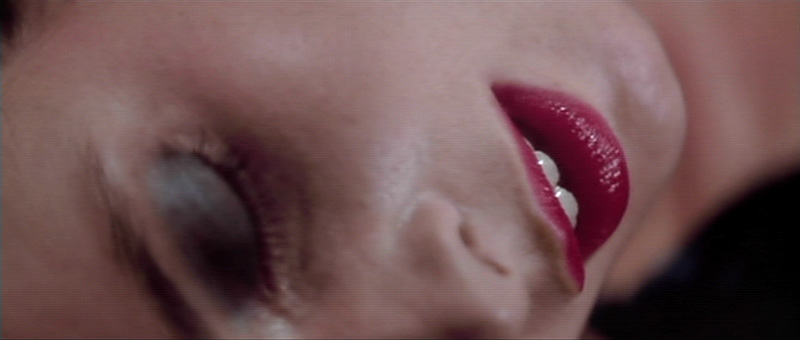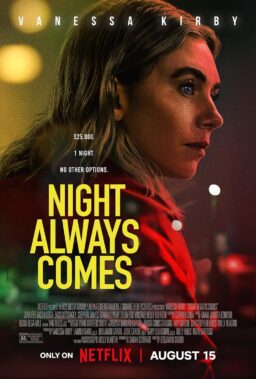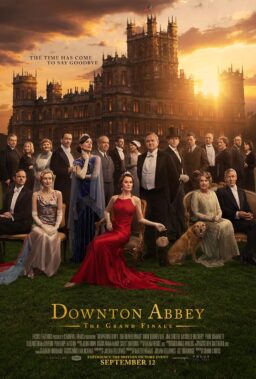If you want to understand David Lynch, maybe the place to start is with his paintings. He paints in a style he describes as “bad primitive art,” and says that one of his paintings works if you feel the desire to sink your teeth into it.
Although Lynch is a serious painter, he is much better known as a movie director, and with his latest movie, “Blue Velvet,” he finds himself at the center of a national critical firestorm. The movie is so strong, so shocking and yet so audacious that people walk out shaking their heads; they don’t know quite what to make of it.
I am not one of the film’s admirers. Or perhaps I should say, I admire its craftsmanship but am not one of its defenders. I believe Lynch is a talented director, and that in “Blue Velvet” he has used his talent in an unworthy way. The movie is powerful, challenging and made with great skill, and yet it made me feel pity for the actors who worked in it and anger at the director for taking liberties with them. Then I interviewed Lynch in New York, and I found, not a monster, but a pleasant, sincere man who was disarmingly frank about his film.
If you have not seen “Blue Velvet,” perhaps a brief description is in order. The movie is a head-on collision between two popular genres from the 1940s: the insipid small-town comedy and the film noir. In the first genre, a character not unlike Dagwood Bumstead fumbles his way through life while dogs bark at him, kids play jokes at his expense and his wife nags him a lot. Yet all is essentially sunny in his world, which is made up of picket fences, green awnings, shade trees, genial neighbors, friendly policemen and postmen who know his name. Dagwood, or whatever you want to call him, acts as if he is unaware that many males actually do have sex lives.
In the film noir, a more serious and brooding genre, ordinary people find out that evil lurks just beneath the surfaces of their lives, and that they themselves are capable of committing unspeakable acts. A proper film noir is not usually a gangster or crime film, but the story of how evil enters everyday lives. The genre is profoundly pessimistic; it does not show bad people doing bad things, but average people doing bad things. The implication is that we are all capable of evil.
“Blue Velvet” has two kinds of scenes: (1) The everyday small-town scenes, in which people go out on dates to the soda fountain and drive around town in shiny cars, and (2) the subterranean scenes in which the most unspeakable acts take place behind closed doors. Lynch has cast as his heroes two clean-cut young performers, the square-jawed Kyle MacLachlan and the blond, perky Laura Dern. They’re both about 18 or 19 years old. One day they stumble across a mystery involving a severed human ear, and their investigation leads to one of the most shocking scenes in recent movies.
The scene: MacLachlan hides in the apartment of a local nightclub singer (Isabella Rossellini), who he suspects knows something about the ear. He watches as a perverted madman (Dennis Hopper) screams obscenities at the woman, beats her, inhales narcotic gas from a cylinder at his belt, and then rapes her. He leaves. Rossellini finds MacLachlan in the closet, pulls a knife on him, forces him to disrobe and orally arouses him. Later, she asks him to “be a bad boy” and hit her. She is a masochist. Although Hopper apparently holds her husband and son as kidnap victims to force her to submit to him, we realize with a shock that she has discovered that she likes to be brutalized.
In the course of the film, Rossellini is put through a more severe emotional ordeal than any movie performer since Marlon Brando and Maria Schneider in “Last Tango in Paris.” In one scene, she walks naked on the lawn of the local police chief, while strangers form a crowd. I found that her scenes had an unexpected effect. I responded to their raw power, yes, but the more I thought about them, the angrier I got, because Lynch surrounds them with what is essentially a satire on small-town comedies. He generates this immense and painful power, and then uses it merely as counterpoint to an immature satire.
The more painfully a director violates the sensibilities of his audience and his performers, the more serious his intention should be. Bernardo Bertolucci earns every moment of pain in “Last Tango in Paris” because he tells us things about the human spirit that we can respond to and learn from. Ingmar Bergman’s “Cries and Whispers,” the most painful film I have ever seen, requires three actresses to portray moments of incredible pain, debasement and self-revelation. It is a noble film. Lynch shows us Rossellini naked and humiliated, and then cuts to jokes about the slogans on the local radio station.
The movie has received some rave reviews, but many of them seem to tap-dance around the central emotional challenge to the viewer. In The New Yorker, Pauline Kael says she loves the movie, but her review is an extended plot summary, a detailed description of the movie that seems to imply that a precis is enough — she doesn’t choose to discuss the issues it raises. Dave Kehr, in the Chicago Tribune, hardly seems to have noticed the scenes I just described and devotes most of his attention to explaining the cleverness of Lynch’s ironic style. Gene Siskel says the director is “playing the audience like a piano,” first shocking us, then making us laugh, as if merely causing sensation to the audience — any sensation — were by definition an admirable thing.
Is that all a movie is, style? Some critics think so. They argue that a movie isn’t about anything except itself. They approach “Blue Velvet” like some kind of clever intellectual puzzle in which the challenge is to find all of Lynch’s filmic references and neat little in-jokes. But wait a minute. There’s a woman standing naked on the lawn here. Has this movie earned the right to show her that way?
Having talked to Lynch about his film, I am inclined to believe that he takes it more seriously than many of his defenders do. It is an intensely personal film, and here’s the catch: It is personal for reasons that Lynch has not put in the film. Therefore, it means more to him than it ever can to us.
He told me, for example, that the scene of Rossellini naked in the night was inspired by his childhood: “When I was little, my brother and I were outdoors late one night, and we saw a naked woman come walking down the street toward us in a dazed state, crying. I have never forgotten that moment.” What about the scenes in which a woman finds she loves sadomasochistic abuse more than her own family?
“She is a willing captive. I feel that people can fall into these things, like steps,” Lynch said. “In real life, it doesn’t happen so fast. I’m not saying it couldn’t. I feel like people get into it by degrees. The boy in the film does what she asks him to do, and finds in himself the ability to do a lot of the things he never thought he could do.”
Lynch said he grew up in Montana, in a town a lot like Lumberton, the town in his movie. He spent a lot of time in the woods. His father was a research scientist for the Department of Agriculture. They lived on a street with picket fences and rose bushes, just like in the opening of the movie. The family moved around the Pacific Northwest — Missoula, Mont.; Spokane, Wash.; Boise, Idaho — and then moved east to Alexandria, Va. Eventually, he found himself enrolled in art school in Philadelphia, and it was in that city that unspecified bad things happened to him, and he realized that life was more complicated than he thought.
He always wanted to be a painter. He got into filmmaking indirectly, doing some film school projects. His first feature, “Eraserhead,” established him as a brilliant young stylist. Then came “The Elephant Man” and “Dune.” When “Dune” was released, I was struck by how ugly it was, how deliberately ugly he made its planets and their life forms. It had none of the awe, wonderment and beauty of many science-fiction films. I gather that was deliberate.
Lynch described his feelings about painting to me: “You go by most paintings, and they don’t stop you. You can walk by so much because it’s merely beautiful. I like to feel that you could bite my paintings. Not to eat them, to hurt them. I like to feel like I’m painting with my teeth. I call my painting ‘bad’ because bad painting has its own beauty. It’s not a designer tapestry or a commercial hype. It makes you react to it.”
All right. I have reacted to “Blue Velvet,” too. As an experienced and clever film critic, I even know how to write fashionable praise about the film — how to interpret the director’s message, how to show I am bright enough to understand his subtleties. I can even rationalize his extremes and explain how only philistines will dislike the work.
I know how to write that kind of review, but damn it all, I would be reviewing the movie’s style and ignoring its lost soul. Maybe some critics have seen so many movies they have forgotten how ordinary people look at them. For most people, movies aren’t about style, they’re about the characters in them, and what happens to those characters, and what it means. And in “Blue Velvet,” there are some scenes in which a woman is degraded and humiliated and made to suffer obscenely, and other scenes in which we’re supposed to giggle because the call letters of the local station are WOOD, and they give the time “at the sound of the falling tree.” Sorry, but I just couldn’t get my lips to smile.












